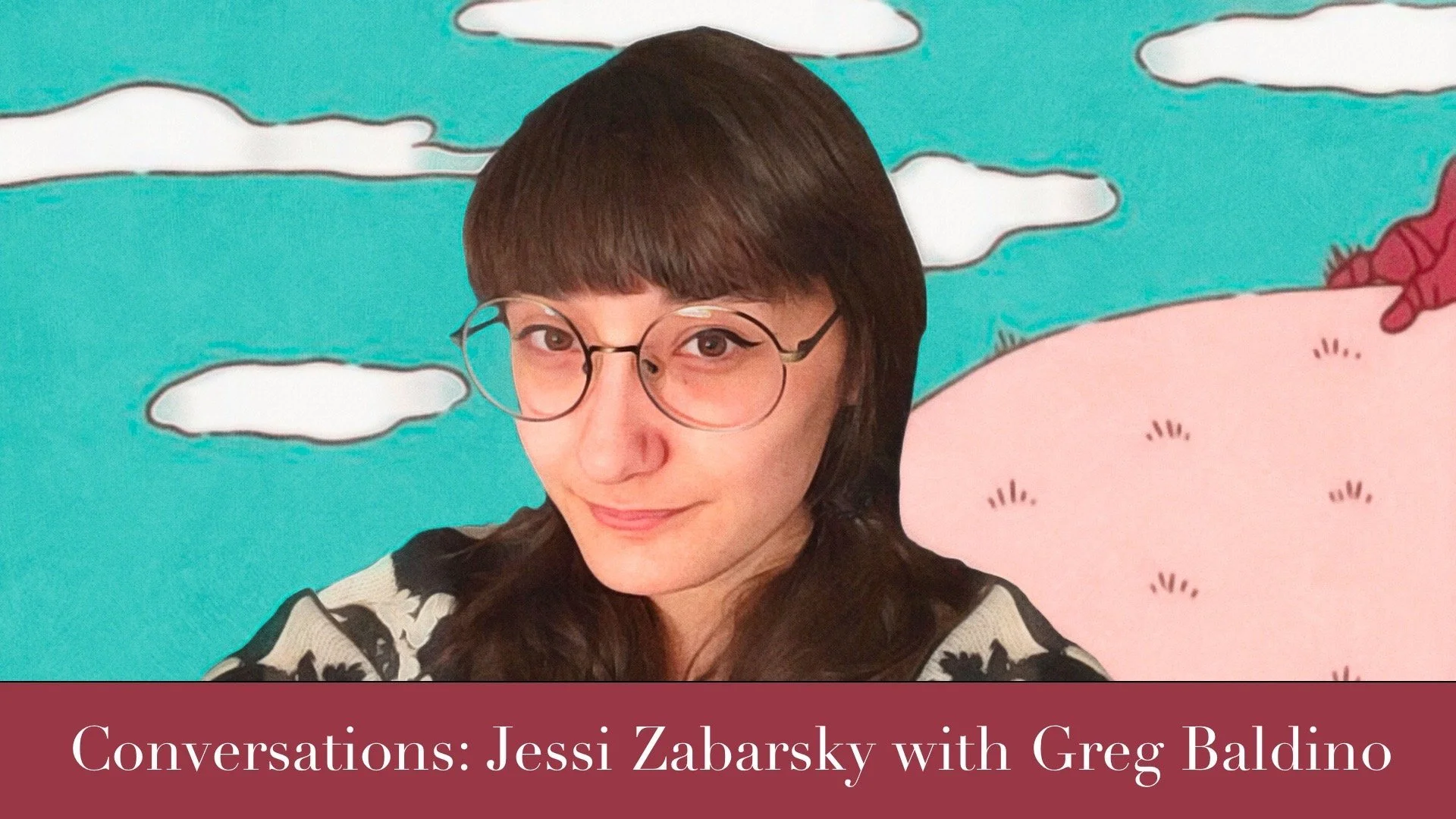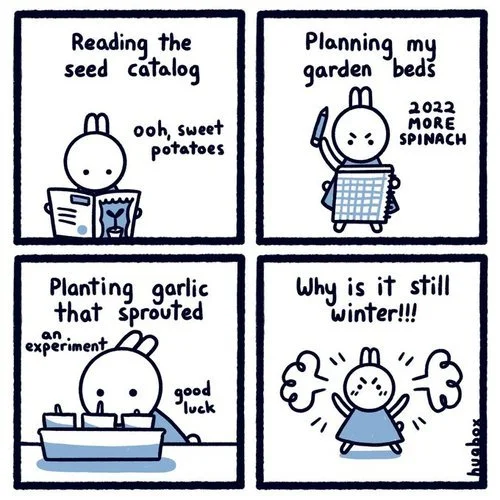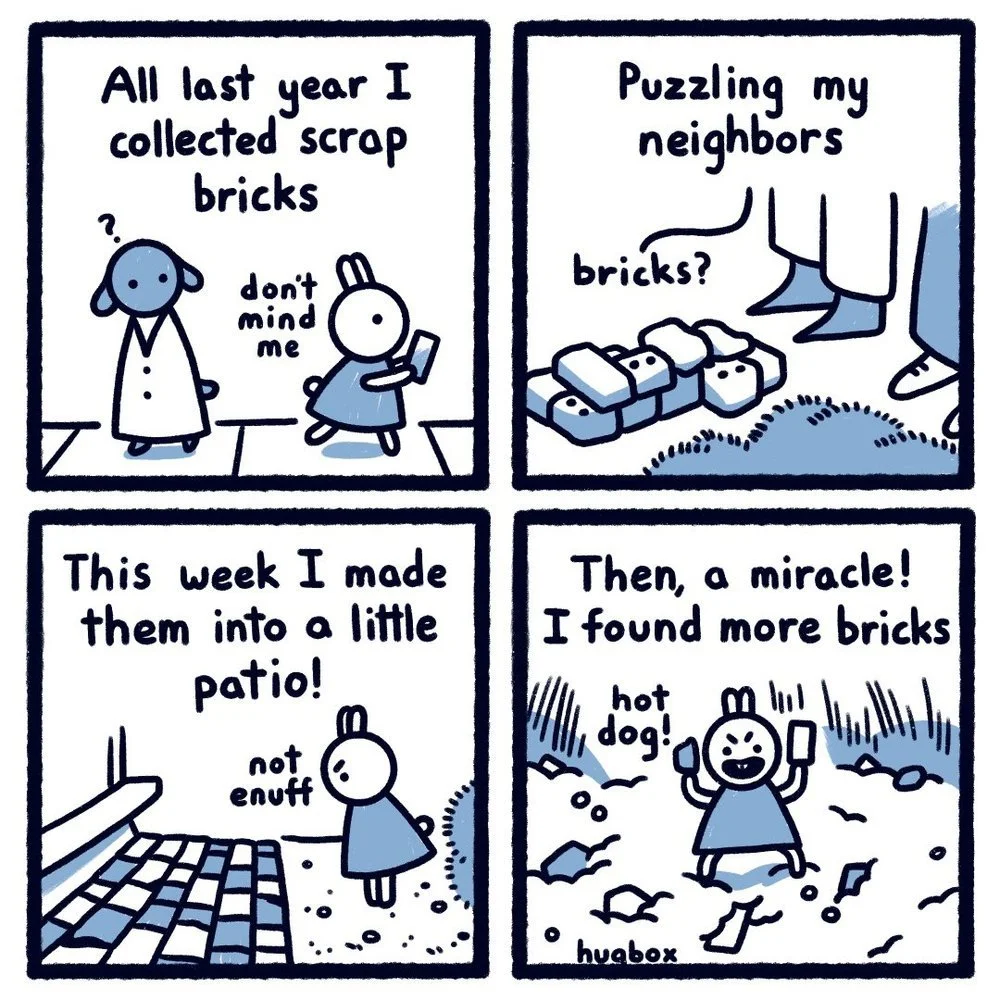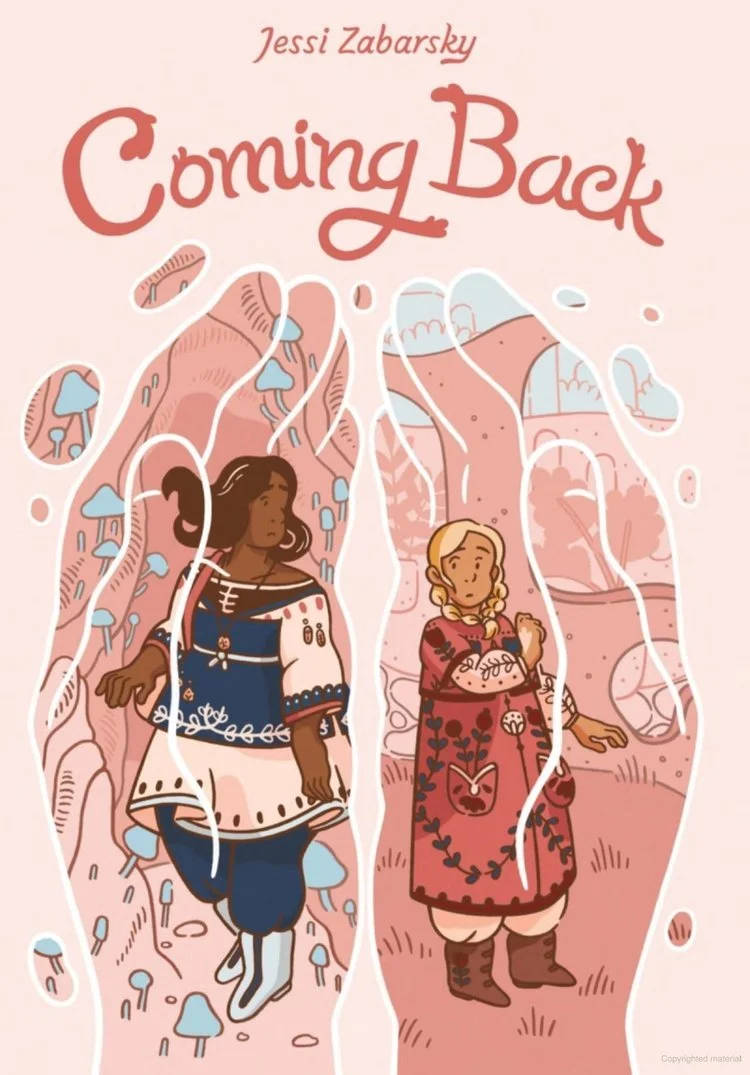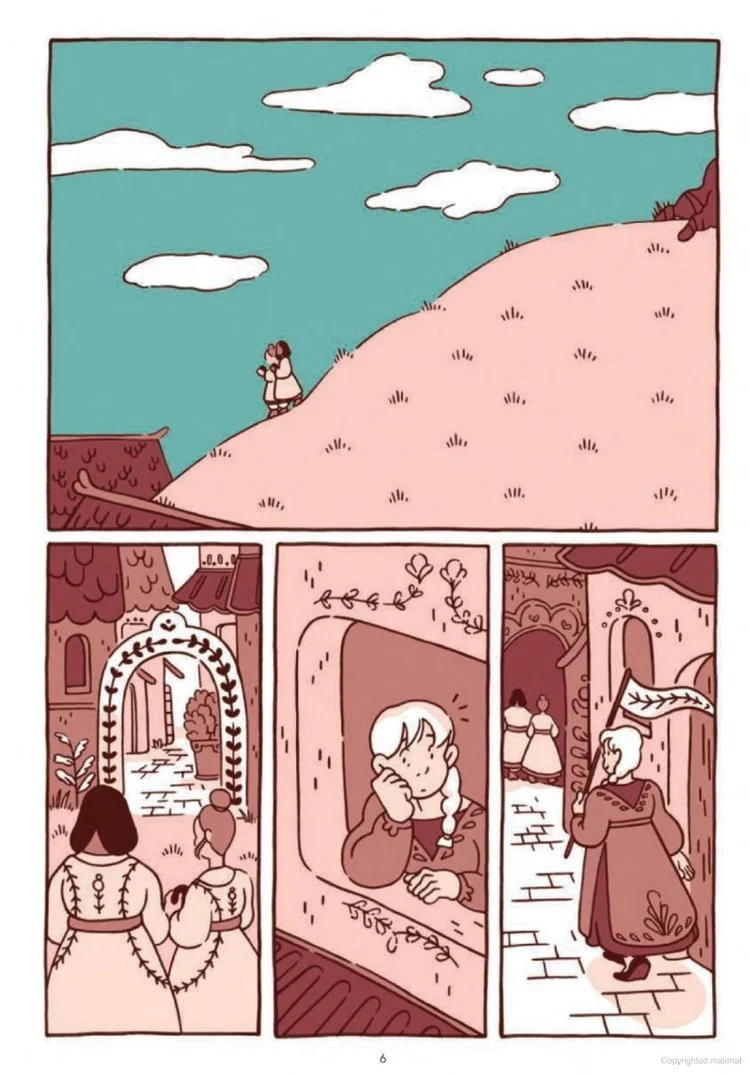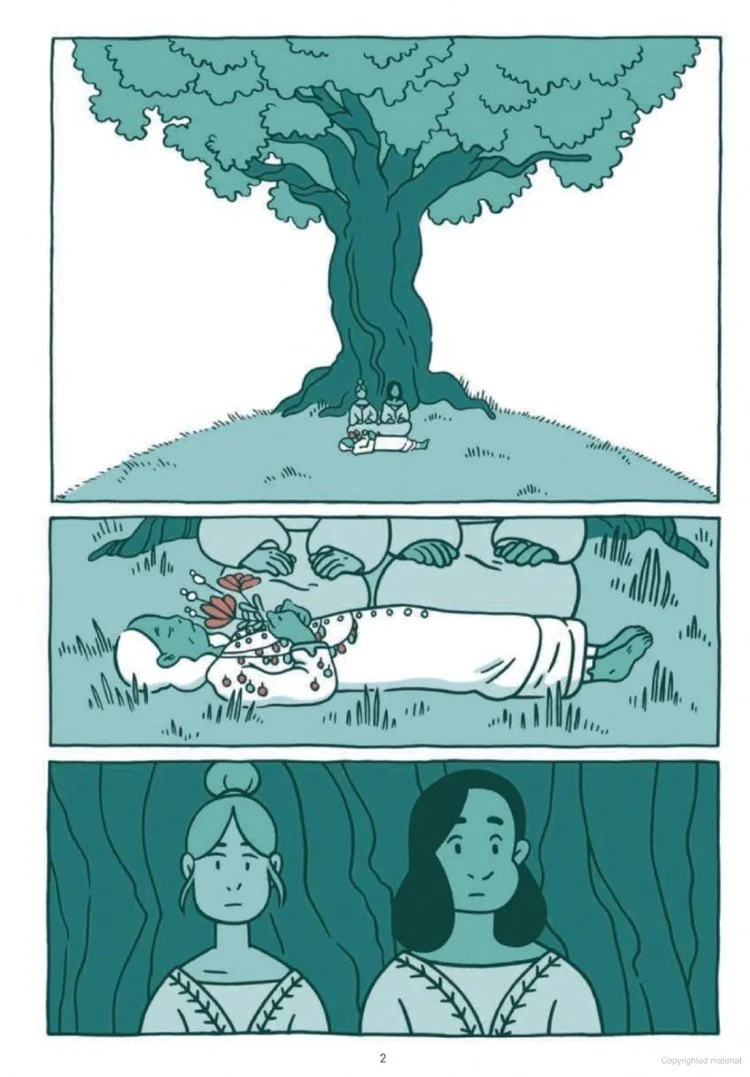Comics Artist Jessi Zabarski with Greg Baldino
I first encountered Jessi Zabarsky's work when she tabled at the Chicago Alternative Comics Expo many years ago. I WANT TO EAT EVERYTHING said the cover, above a cartoon bunny flung over a pile of fruits and vegetables and pastries and--I had to buy it. Funny animals and cooking are two of my favorite genres in comics and in ten pages Jessi had given me everything I love about both of those. After that, finding her table to pick up her new work became an annual treat. Since that first encounter, her body of work has expanded to include two graphic novels; Witchlight, originally published in single issues by Czap Books and currently in print from RHGraphix along with her newest release, Coming Back.
When you were growing up, what was the first artist or artwork that helped you to realize that visual stories were something that people did, that this was something you could do?
I grew up being read tons of picture books, so those were probably my earliest experience of visual stories! I’m still a big nerd for them now. As an older child I read a lot of Calvin & Hobbes and Tintin, but getting the first volume of Ranma 1/2 from the library was when it really clicked for me that comics were something I could make, too.
You recently participated in Hourly Comics Day, an annual event started by cartoonist John Campbell in 2005 in which participants draw a short comic for each hour they're awake on February 1st. How did you start doing those? And what's that day like for you?
I started doing Hourly Comics Day in college, when we had a small comics club. For the first few years they really stressed me out and I didn’t like my results at all! They started getting better when I began drawing myself as a rabbit, at first just kind of a bunny head on a human body. I also switched to drawing straight to ink instead of trying to both pencil and ink. I kept making small adjustments, and now I use a set template (three square panels), draw digitally, and present myself as a small cartoon rabbit, approximately a foot tall. For me, it’s the right balance of fun, achievable, and still a little challenging!
I love the short strips you post to your Twitter account, so seeing your output on Hourly Comics Day is always a real treat! What's your process like for your short weekly strips?
Thank you! I almost always draw those comics on Mondays, the day before I post them. They’re loosely about my life the previous week- something that happened, something I’d been thinking about, a difficulty or a joy. Sometimes I have an idea early in the week, sometimes I have to sit and think about it right before I draw it. They’re intentionally very simple and quick to make, since my other comics work takes so long. I make them fairly similarly to my hourly comics, with a template and straight to digital inking. The next day, with fresh eyes, I check for mistakes and do adjustments, then export! They each take about two hours to make, which is doable to fit into my week.
Right before the pandemic I got into fountain pens, which resulted in becoming very particular about things like paper quality so I'm curious about what kind of tools you use in your work.
For my published comics, I draw in pencil on smooth Bristol board and ink with Kuretake disposable brush pens. Then I scan the pages into Photoshop, do fixes and cleanup, then use Procreate on my iPad to letter. Lastly, back to Photoshop for color!
Do you use anything different for your personal sketching?
I basically don’t keep a sketchbook, which I’m sure would horrify all my art teachers! I’ve never liked doing it and I pretty much stopped as soon as I didn’t feel pressured to any more. I sketch when I’m figuring things out for a story, in whatever notebook I have lying around. I keep a personal, written journal off and on, but right now I just write a quick summary of my day in the 300 character daily journal space in [the video game] Pikmin Bloom, haha.
I remember the one year I was looking for you at CAKE and you weren't there that time, but your work was--you had the first issue of a new project called Witchlight out at the Czap Books table. It's the story of a girl kidnapped by a witch who then becomes her student, and it was very different from the work I knew you for. I always find that really exciting when an artist I like goes in a new direction. How did you go from doing short comics to a long form story?
I tricked myself into making Witchlight! I initially thought it was going to be a quick 18 page comic. I kept making it longer, so I kept making chapters, and a couple years later, I had a 200 page graphic novel. Whoops!"
How did the process of accidentally making that book prepare you for your second graphic novel, Coming Back?
That experience mostly proved to me that I could, actually, make long form comics, which I’d been very intimidated by. I was able to dive right in to Coming Back, though I made some changes to my process. I started printing page templates and panel borders onto Bristol sheets, which for Witchlight I did by hand on each sheet with a ruler. I also bought a larger scanner/printer, so I could scan two pages at once. More conceptually, I was better able to think about and plan the story, since I wasn’t doing it piecemeal (and I got lots of valuable feedback from my editor, Whitney!) I also learned a ton from Witchlight’s colorist, Geov Chouteau, and applied that to drawing and coloring Coming Back!
Your new book is about Valissa, the only one in her village without any magic powers. She gets cast out from her home when she breaks one of the village laws and goes forth on a quest to save the village and earn the love of Preet, the most magically powerful of the villagers.. How did this story come together for you?
Coming Back had kind of been stewing in my head for a few years. I keep notes documents on my phone and pour whatever story bits I think of into them until something comes together. I knew I wanted to make a story about an insular community, physical transformation, and changing cultural norms. I wanted to explore what an “ideal” queer space looked like and how it would still be pushed to change and improve. Those themes stayed true through the whole process, though the specifics of the story changed a lot!
Comics, prints, and jewelry can be found for purchase here.
Her short comics are regularly posted to her Twitter account.
About Jessi Zabarsky
Jessi Zabarsky is a cartoonist and illustrator living in Chicago with her cat and forty three plants. She was raised in the woods and will one day return there. Her short comics are regularly posted to her Twitter account, @jessizabarsky, and her comics, prints, and jewelry can be found for purchase here.
About Greg Baldino
A down-beat Don Quixote of the Midwest, Greg Baldino is a prolific journalist and essayist, and the author and co-editor of 5 books, including the acclaimed Early History of the Gay Rights Movement which spans from the trials of Oscar Wilde to the most famous event of trans resistance and quotes a potentially gratuitous amount of pop lyrics. In his spare time he researches historical bawdy houses, grows willfully defiant tomato plants, and drinks iced coffee regardless of the weather.
